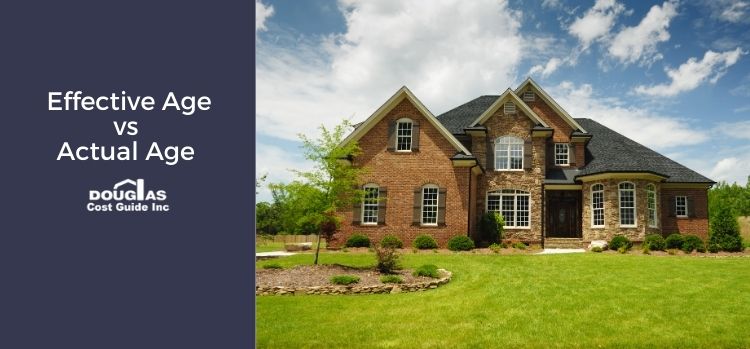Effective age and actual age of homes are used by industry professionals but can be easily explained. How old your home (or structure) is, is more than just the year your home was built in. The components of the structure like the roof, siding, trim, and windows can also contribute to its age. Changing or updating features inside and outside can affect the age of the structure. But what is the difference between the actual age of the building compared to when factoring in all the components? That’s the difference between effective age and actual age.
What is Actual Age?
Actual Age is the date that the construction of a structure, whether that be a barn, storage shed, residence, garage, and/or ancillary building, is completed. Typically, this is expressed as a year rather than an actual pinpoint date. The actual date is defined as when the structure was fully completed and ready for occupancy.
What is Effective Age?
Effective Age is defined as the date, again being a year rather than a specific pinpoint date, that the structure, barn, storage shed, garage, residence or other ancillary building as it appears to the observer/inspector. This means that a home with an actual age of 80 years could have an effective age of 10 years because of the maintenance and superior updates to the home.
Who Determines Effective Age?
Effective age is subjective. While there are some guidelines, it’s not a complete science. The observer or inspector that reviews the structure is the one who ultimately determines the effective age of a structure. They are the ones that give weight to the age of the original components and the age and condition of all of the new components. As effective age is subjective, different inspectors will probably have different opinions of the effective age and they would all be correct.
How Effective Age Can Impact the Age of the Structure
Effective age can be equal to actual age but is can also be greater than or less than the actual age. Let’s use an example to showcase how effective age can impact the actual age of a structure.
An Example of Calculating Effective Age
Let us assume that a structure is constructed in 1972 and therefore has an actual age of 50 years, as of 2022. The owner of the structure has renovated, updated, and improved this structure over the past fifty years. This has been done multiple times by removing the interior lining material and insulation and placing brand new insulation and then new interior lining material.
In addition to the new interior lining and insulation, the exterior wall and roof cladding has been replaced during this fifty-year time span. The owner also upgraded the electrical service and wiring throughout the structure, the plumbing service, the ventilation and may even have poured a new concrete floor. Some of these improvements have been done all at once while others were completed over several years and even multiple times over this 50-year time span.
When the inspector comes to review the structure, they have to consider all components of the structure to determine its effective age. While the bones of the structure are still 50 years old, many of the other components are newer. The effective age, because of these newer components, provide an image of a structure that looks newer than its actual age resulting in a possible effective age of only 30 years.
Can Effective Age be Calculated Greater than the Actual Age of the Structure?
It is possible that a structure may have an effective age that is older than the actual age of the structure. If the owner has not maintained the building or has not improved any of the components and the structure has deteriorated, it can result in the effective age being older than the actual age.
Use the Douglas Cost Guide to Estimate Replacement Costs on Structures
Effective age is a key tool that appraisers use to evaluate the age of a home. Understanding how effective age can impact the age of a building is crucial when estimating replacement costs for structures. The Douglas Cost Guide uses effective age as a cost adjustment when estimating replacement costs for residential dwellings and agricultural structures. Our valuation tool uses current data, is reliable, and is easy to use. Trust the industry-standard solution in Canada for estimating replacement costs for all kinds of structures.

